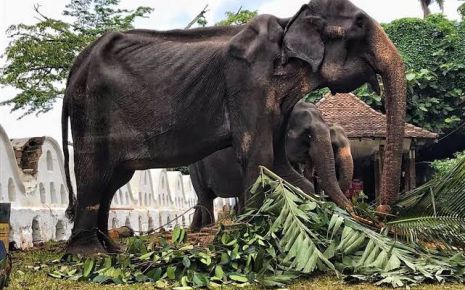Understanding Child Labour In India
Child Labour is one of the growing fears in a developing society. It not only
affects a child physically, but also mental effects on the child. It literally
wipes out the future of the child. Poverty is generally seen as one o the most
important reasons of child labour. The phenomenon of child labour undermines the
future and development of the whole country. Despite so many laws enacted to
abolish child labour, it has not been effective at all. According to 2017 statics India is one
of the leading countries in Asia has a whopping 33 million
children employed in various forms of child labour[1].
Using children as domestic workers is one of the growing concerns for child
activists throughout the world. This custom is generally more prevalent in
societies of developing countries. They are forced to work for long hours,
generally with a very meagre payment with certain instances of no food. These
conditions can be equated with slavery as well. There have been cases reported
where young children employed as domestic workers as been sexually harassed as
well. With the latest notification on child labour by the Ministry of Labour has
made domestic work and hiring of children in dhabas, and other such areas
“hazardous occupationsâ€[2].
It has been seen that child labour is more prevalent among the minority
population of the country. Most of these children are from schedule tribes,
Muslims, lower castes, etc. Incompetence of the legal system and other relevant
authorities coupled with the need to pay very low wages have ensured that the
system of hiring children as workers have increased dramatically.
Moreover, bonded child labour is found in abundance more in the informal sector
than the formal sector. Bonded child labour is the hiring of a child against a
debt or social obligation of someone else in the family. This is another form of
slavery, as the employment rendered is against the wishes of that child.
Children who are bonded with their family or inherit a debt from their parents
are often found in agricultural sector or assisting their families in brick
kilns, and stone quarries. Individual pledging of children is a growing
occurrence that usually leads to trafficking of children to urban areas for
employment and have children working in small production houses versus
factories. Bonded labourers in India are mostly migrant workers, which opens
them up to more exploitation. Moreover, they generally belong to a lower caste
such as the dalits or other such marginalised tribal classes. Child labourers,
due to the nature of their work of are at very high risk for physical and
sexual abuse and neglect sometimes leading to death. They often are
psychologically and mentally disturbed and have not learnt many social skills or
survival skills.
Definition of Child Labour
"Child" as defined by the child labour (prohibition and regulation) Act 1986 is a person who has not completed the age of 14 years. In simple words, Child labour is the practice of having children engage in an economic activity. Every child is considered as a gift of god, it must be nurtured with care and affection with in the family and society. But unfortunately, due to the socio-economic problems children were forced to work in industries, leather factories, hotels and eatery. The child labour is not an isolated phenomenon it is coupled with socio economic problem of the society so in order to eliminate child labour first we should focus on socio economic issues of the society. It is in the hands of administrative. It should bring effective measures to eliminate child labour.Causes of Child Labour
According to a UNICEF report, one of the reasons for child labour, especially in rural and impoverished parts of the world is that children have no real and meaningful alternative as schools and teachers are not available. Many communities, particularly rural areas do not have adequate school facilities, even the availability and quality of schools is very low. Furthermore, the system of informal low paying economy is based on low cost, easy to hire, easy to dismissal of labour, especially in the form of child labour. After the unorganized agriculture sector which employs 60% of child labour, children are employed in unorganized trade, unorganized assembly and unorganized retail work. In India, various issues related to the socio- economic and socio-cultural character interdependently contribute to the problem of child labour, this includes inflexibility and structure of India’s labour market, size of informal economy, inability of industries to scale up and lack of modern manufacturing technologies, etc.Some of the key issues that are prime cause of child labour in India are as follows:[3]
Poverty: Poverty is one of the main causes of child labour. In developing countries poverty is one of the major cause and the children are considered as helping hand to feed their families, to support their families and to support themselves. Due to poverty, illiteracy and unemployment parents prefer to make the children work to earn money rather than send them to schools and thus they are compelled to work in inhuman conditions at significantly low wages.
Debts: The poor economic conditions of people in India force them to borrow money. The illiterate seek debt from money lenders during emergency situation. At later point of time they find themselves difficult in paying back the debts and interest, creating a vicious cycle of debt. As a result the debtors were made to work for money lenders and then debtors drag their children too in assisting them so that the debts could be paid off.
Professional Needs: There are some industries such as the bangle making industry, beddi industry etc where delicate hands and little fingers are needed to do very minute work with extreme excellence and precision. An adult’s hands are usually not so delicate and small, and due to lack of technology and technical expertise, children from poor households are employed to do such dangerous work which often results in eye accidents of the children or decrease in or loss of sight by adulthood.
Legal recognition of rights of Children
Position under International LawThe concerns with regards to the abuse and exploitation of child through labour have been a concern of protection of human rights in the International community. There are three key international conventions dealing with child labour, namely:
1. UN Convention on the Rights of the Child 1989 (CRC)
2. Minimum Age for Admission to Employment of 1973 (ILO Convention138)
3. Worst Forms of Child Labour of 1999 (ILO Convention).
India has not rad the latter two conventions of International Labour Organisation and had made a reservation to Article 32 of the UN Convention on the Rights of the Child 1989 at the time of ratification stating that it would apply the article in a progressive manner, according to its national legislation and international commitments, especially in relation to the minimum age.[4]
Position under Domestic Laws
India discourages child labour and has made it illegal through the Constitution and various legislations aimed at protecting the childhood and the rights of children.
Constitution:
The Constitution of India protects the rights of children by making primary education a Fundamental Right as well as by imposing duty on the state to protect their interests under the Directive Principles of State Policy.
The pertinent provisions/articles are laid down in the following:
Art. 21: Right to education - The State shall provide free and compulsory education to all children of the age of six to fourteen years in such manner as the State may, by law, determine.
Art 24: Prohibition of employment of children in factories, etc.- No child below the age of fourteen years shall be employed to work in any factory or mine or engaged in any other hazardous employment.
Art 39: Certain principles of policy to be followed by the State.
The State shall, in particular, direct its policy towards securing-
(e) that the health and strength of workers, men and women, and the tender age of children are not abused and that citizens are not forced by economic necessity to enter avocations unsuited to their age or strength;
(f) that children are given opportunities and facilities to develop in a healthy manner and in conditions of freedom and dignity and that childhood and youth are protected against exploitation and against moral and material abandonment
Art 45: Provision for free and compulsory education for children
The State shall endeavour to provide, within a period of ten years from the commencement of this Constitution, for free and compulsory education for all children until they complete the age of fourteen years.Thus, the constitution ensures the right of all children 6-14 years to free and compulsory education; prohibits forced labour; prohibits the employment of children below 14 years in hazardous occupations; and promotes policies protecting children from exploitation. Whoever employs a child or permits a child to work is punishable with imprisonment from three months to one year or with fine no less than INR 10,000–20,000 rupees or with both.
Legislations and Policies:
Child Labour (Prohibition and Regulation) Act (1986) (amended in 2016): This act aims at prohibition of the engagement of children in certain employments and regulation of the conditions of work of children in certain other employments. It bans the employment of children below the age of 14 in many professions, such as domestic labour, and in the hospitality trade for example in roadside dhabas (restaurants), restaurants, hotels, motels and spas.
However, it fails to include a section of toiling children in the unorganized sectors including agriculture, as well as household work. It does not ban child labour in agriculture.
2. The Right to Education Act 2009: The act makes it mandatory for the state to ensure that all children aged 6 to 14 years are in school and receive free education (primary education). Along with Article 21A of the Constitution of India recognizing education as a fundamental right, this constitutes a timely opportunity to use education to combat child labour in India.
3. Juvenile Justice (Care and Protection of Children) Act 2000 (Amended in 2006): The act defines child as being below 18 years of age This at provides for the inclusion of working child in the category of children in need of care and protection, without any limitation of age or type of occupation. Section 23 (cruelty to Juvenile) and Section 26 (exploitation of juvenile employee) specifically deal with child labour under children in need of care and protection. It is in consonance with the Convention on the Rights of the Child (CRC), ratified by India in 1992, which states that all children have the right to be protected from work that is dangerous, or that might harm children’s health or education.
4. National Policy on Child Labour (1987): Focuses on rehabilitation of children working in hazardous occupations and processes.
5. National Policy on Child Labour (2013): The Policy recognises every person below the age of eighteen years as a child and covers all children within the territory and jurisdiction of the country. It recognizes that a multi-sectoral and multi-dimensional approach is necessary to secure the rights of children. The Policy has identified four key priority areas: survival, health and nutrition; education and development; protection and participation, for focused attention. As children’s needs are multi-sectoral, interconnected and require collective action, the Policy calls for purposeful convergence and coordination across different sectors and levels of governance. Based on the new National Policy for Children, 2013 adopted on 26th April, 2013, the Ministry developed a Draft National Plan of Action for Children (NPAC). The Plan of Action has been drafted keeping in view the existing schemes/programmes of various ministries. The purpose is to track and monitor the progress of what is already being done for children across Ministries and sectors.[5]
Concerns with regards to children exploited through labour:
Child Rights does not only lead to the violation of a child’s legally/constitutionally recognised rights, but lead to loss of their childhood and hampers their psychological, social and intellectual development, which has deep seated impact that may persists beyond adulthood.Some of the major concerns are enumerated below[6]:
1. Health damage: Victims of child labour usually have been seen to suffer from psychological problems such as depression and anxiety, pushing them to destructive habits like smoking, alcoholism or drug abuse. The formative environments of abuse in which a child is made to work also trigger a lifetime of low self-esteem, depression, and relationship difficulties. Psychological and emotional conditions such as panic disorder, dissociative disorders, attention-deficit/hyperactivity disorder, depression, anger, posttraumatic stress disorder, and reactive attachment disorder have also been noted in children who have grown up in such abusive and exploitative conditions.
2. Employment: According to the latest statistics, India has about 60 million child labourers. This means immense loss for the India’s economy when successive generations of children attempt to attend the formal workforce; potential talent of children who have been deprived of primary and secondary education will be lost. Instead, they will only be capable of manual and menial labour, in skills like serving tea, cleaning tables and working with hazardous chemicals etc, which significantly reduces their potential contribution to the economy. Despite aggressive attempts to end child labour, India has still not been able to achieve a blanket ban on the practice.
3. Acceptance of child labour: At the present times, child labour exists in many invisible forms. Millions of child labour are encountered on a daily basis and ignored by people, such as the children working as hawkers, or minors used as servants for work like cooking, cleaning utensils and sweeping floors. Silently ignoring child labour is just giving approval to this crime, making it acceptable to treat children as utilities and ‘beasts of burden’. Such indifference to this problem leads to engineering an economy to reliant on the dispensability of desperate children and not the energy of eager and productive men and women. That is dangerous for a country’s GDP, and also unacceptable internationally considering the aggressive initiatives the United Nations has taken to end child labour in all forms.
End-Notes
[1] https://www.moneycontrol.com/news/india/world-day-against-child-labour-2017-key-statistics-2302279.html
[2] http://www.childlineindia.org.in/child-labour-india.htm
[3] https://www.indiacelebrating.com/social-issues/child-labour-in-india/
[4] http://unicef.in/Whatwedo/21/Child-Labour
[5] http://pib.nic.in/newsite/PrintRelease.aspx?relid=118660
[6] http://www.friendsofsbt.org/statistics/
Law Article in India
Legal Question & Answers
Lawyers in India - Search By City
LawArticles
How To File For Mutual Divorce In Delhi

How To File For Mutual Divorce In Delhi Mutual Consent Divorce is the Simplest Way to Obtain a D...
Increased Age For Girls Marriage

It is hoped that the Prohibition of Child Marriage (Amendment) Bill, 2021, which intends to inc...
Facade of Social Media

One may very easily get absorbed in the lives of others as one scrolls through a Facebook news ...
Section 482 CrPc - Quashing Of FIR: Guid...

The Inherent power under Section 482 in The Code Of Criminal Procedure, 1973 (37th Chapter of t...
The Uniform Civil Code (UCC) in India: A...

The Uniform Civil Code (UCC) is a concept that proposes the unification of personal laws across...
Role Of Artificial Intelligence In Legal...

Artificial intelligence (AI) is revolutionizing various sectors of the economy, and the legal i...








Please Drop Your Comments